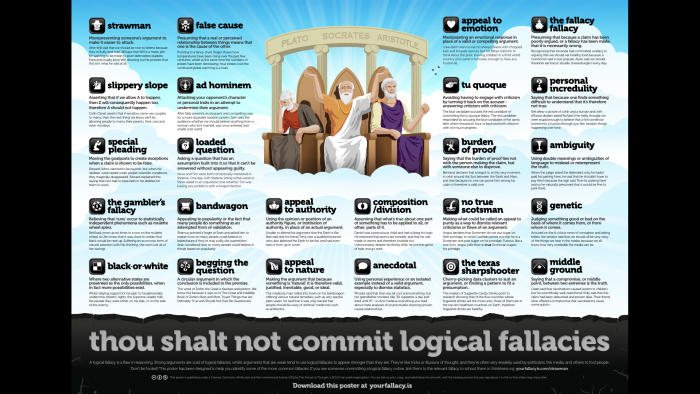
Logical fallacies are common errors in reasoning. They’re the subject of a lot of jokes, but they’re also really important to understand. If you want to know what not to do when making arguments, you’ll want to avoid committing these fallacies. Here’s a list of common fallacies and how they work:
Logical fallacies are common mistakes in reasoning that lead to invalid arguments. There are a wide variety of fallacies, and each has its own name. Here is a list of the most common one in the infographic.
When debating or arguing with someone one must be careful about committing these fallacies.
For example, it is a fallacy to commit the fallacy of begging the question by trying to prove something by using an assumption that requires proof itself. This can happen when you base your argument on circular reasoning and say “X is true because Y is true.” But if you are proving Y from X you cannot use X as evidence for Y. You cannot say “X causes Y, so I know that X exists.” Another logical fallacy is affirming the consequent which means assuming that if one thing happens after another then it must have been caused by that first event occurring first. For example: if my car runs out of gas and stops running then it must mean I didn’t put enough gas in before driving away from the station where I bought my fuel earlier today (I’m still confused as to why this happened). Another good example might be saying “I know that there isn’t any global warming because everyone keeps saying so.” Well… maybe not everyone….?
So, now you know the list of logical fallacies thou shalt not commit. You can use it in your next debate or argument with a friend. I hope this read was informative and entertaining for all who read; may it serve us well in our quest for truth!
